CRYO2019, the 56th Annual Meeting of the Society for Cryobiology, took place recently July 22-25 in San Diego.
As climate change and population growth are of increasing global awareness and concern, CRYO2019 opened with a special conservation session detailing current research activities in preservation of genetic material from wild animal and plant species and agriculturally important crops. Speakers included Oliver Ryder, Kleberg Endowed Director of Conservation Genetics at The Frozen Zoo® of San Diego Zoo's Institute for Conservation Research, giving an overview on the Frozen Zoo's past, present and future conservation research and activities; Hugh Pritchard, Senior Research Scientist in Comparative Seed Biology, at the Royal Botanic Gardens, Kew (UK), speaking on the importance of cryobiotechnology for conservation of wild plant species; and Bart Panis, senior scientist at KU Leuven (Belgium), on the realizations and challenges of ensuring the world's food supply through cryopreservation of vital crops, such as bananas, cassava, potatoes, and sweet potatoes. These topics were further explored throughout the meeting in a number of related sessions including animal conservation and germplasm preservation, and plant cryobiotechnology.
San Diego and the surrounding area is a well known biotechnology hub, and for this reason the second day of the meeting featured a dedicated cell therapy track, featuring a number of academic and industry speakers, including plenary speakers Robert Tressler, Vice President of the San Diego Blood Bank, and John Elliott, Principal Investigator at the National Institute of Standards and Technology (NIST). Session themes throughout the day included preservation of cellular therapies and good manufacturing practice in cell therapy manufacturing development and commercialization, with industry speakers from Kite Pharma, GE Healthcare, Fate Therapeutics, BioLife Solutions, and Juno Therapeutics, among others.
Multiple sessions in fundamental cryobiology topics, cell and tissue preservation, tools and technologies, natural adaptation, and thermal medicine rounded out the scientific program, alongside several sessions organized in collaboration with the Organ Preservation Alliance and the International Society for Biological and Environmental Repositories (ISBER). Full program information can be viewed at
cryo2019.com/schedule.
During the meeting the Society for Cryobiology was pleased to announce the inaugural winners of two recently established awards, the Dayong Gao Young Investigator Award, named after current Society President and sponsored by GoldSim, which gifts $5,000 to a young researcher in the first 10 years of their post-PhD career, and the Arthur W. Rowe Cryobiology Best Paper Award, awarded to an outstanding research article published in the preceding year in Cryobiology, as decided by the journal's editorial board.
The inaugural winner and recipient of the Young Investigator award was announced as Leandro Godoy, Associate Professor at the Federal University of Rio Grande do Sul, Brazil, for his research on the application of biotechnologies to reproduction of aquatic organisms, the development of protocols for gamete and embryo cryopreservation and the effects of cryopreservation on reproductive cells metabolism. His research has applications in both aquaculture and conservation of endangered aquatic species through the establishment of germplasm banks. Dr. Godoy, who is leader of the ReefBank Project, plans to use the $5,000 honorarium for the ReefBank Project, specifically to assist with creating the first bank of coral gametes in the South Atlantic Ocean.
Arthur W. Rowe, founding member of the Society, and Cryobiology editor-in-chief for 24 years, delivered a presentation on the journal's history before the announcement of the winner of the eponymous best paper award - James D. Benson (University of Saskatchewan) et al. for "A toxicity cost function approach to optimal CPA equilibration in tissues" Cryobiology vol. 80. This research explores a numerical approach to adapt cell-based CPA equilibration damage models for use in a classical tissue mass transport models, and found that there are fundamental differences between protocols designed to minimize total CPA exposure time in tissues and protocols designed to minimize accumulated CPA toxicity.
CRYO2020 will take place July 21-24, 2020 in Chicago.
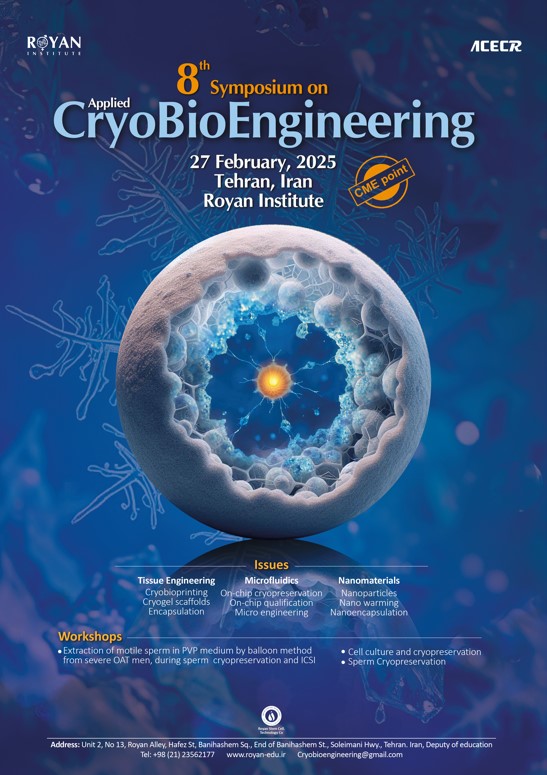 The Royan Institute's 8th symposium on Applied Cryobiology Engineering took place on February 27, 2025, in Tehran. Presentations were given by local and international speakers from Iran, Canada, and Australia.
The Royan Institute's 8th symposium on Applied Cryobiology Engineering took place on February 27, 2025, in Tehran. Presentations were given by local and international speakers from Iran, Canada, and Australia.
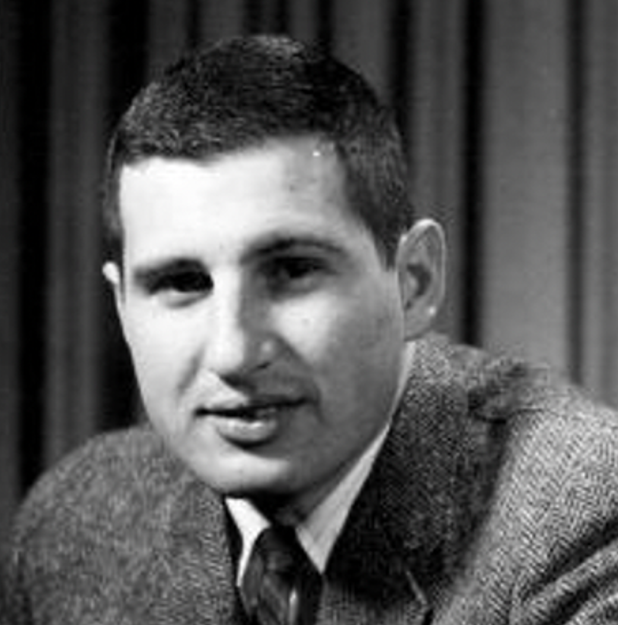 August 1, 2022 | Noon - 5pm | MIT, Bush Room 10-105 or via Zoom
August 1, 2022 | Noon - 5pm | MIT, Bush Room 10-105 or via Zoom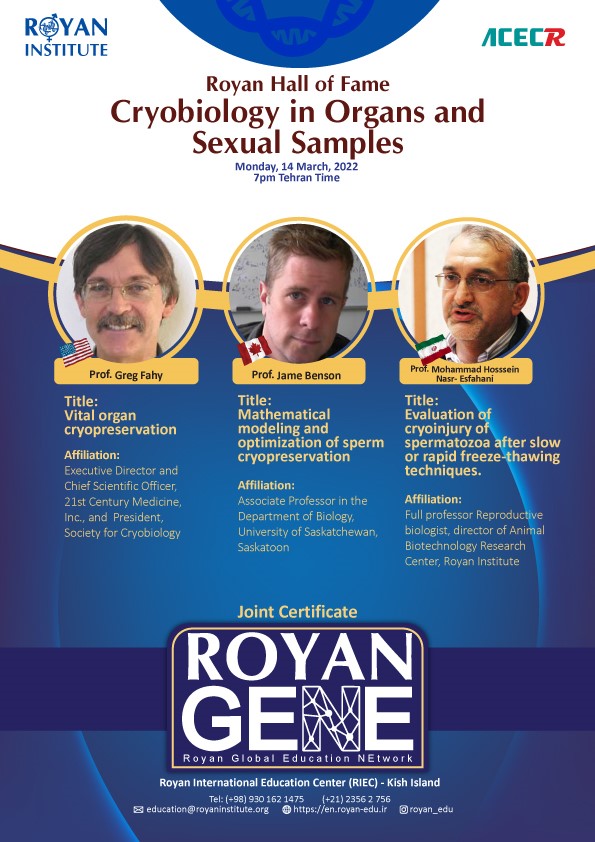 The core essence and beliefs of creating Royan Global Education Network focus on bringing all scientific activities and research of multilateral interests under one umbrella so that all those interested in various fields of activities can enjoy the benefits and seize the opportunities coming along with its activities and programs which appear as two phenomena called “Hall of Fame” and “Dialogue with Fame”. As per this spirit of unity, the 7th round Royan GENE program was held on 14 March 2022 as a Hall of Fame in the realm of Cryobiology in Organs and Sexual Samples. This Hall of Fame webinar featured highly notable lecturers from all around the world whose topics and speeches led to a fruitful webinar and discussion sessions, starting with the lectures of Prof. Gregory M.Fahy, president of Society for Cryobiology; Prof. James Benson, University of Saskatchewan; and Prof. M.H Nasr-Esfahani, director of animal biotechnology from Royan Institute. The topics and lectures represented through this program were mainly concerned with:
The core essence and beliefs of creating Royan Global Education Network focus on bringing all scientific activities and research of multilateral interests under one umbrella so that all those interested in various fields of activities can enjoy the benefits and seize the opportunities coming along with its activities and programs which appear as two phenomena called “Hall of Fame” and “Dialogue with Fame”. As per this spirit of unity, the 7th round Royan GENE program was held on 14 March 2022 as a Hall of Fame in the realm of Cryobiology in Organs and Sexual Samples. This Hall of Fame webinar featured highly notable lecturers from all around the world whose topics and speeches led to a fruitful webinar and discussion sessions, starting with the lectures of Prof. Gregory M.Fahy, president of Society for Cryobiology; Prof. James Benson, University of Saskatchewan; and Prof. M.H Nasr-Esfahani, director of animal biotechnology from Royan Institute. The topics and lectures represented through this program were mainly concerned with: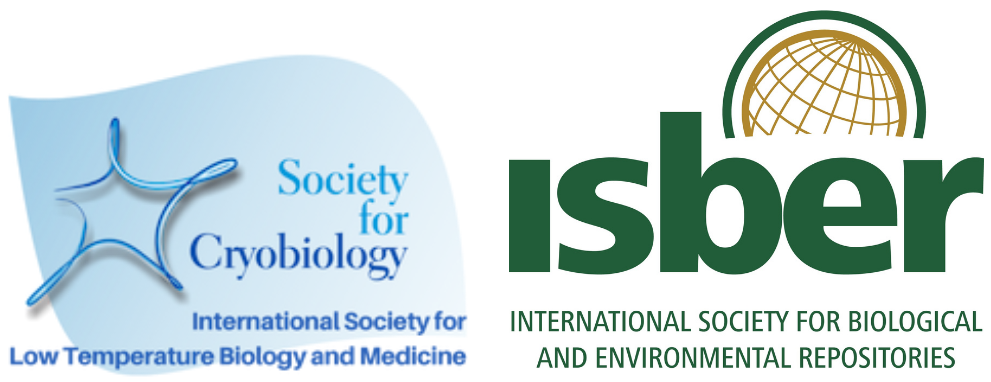

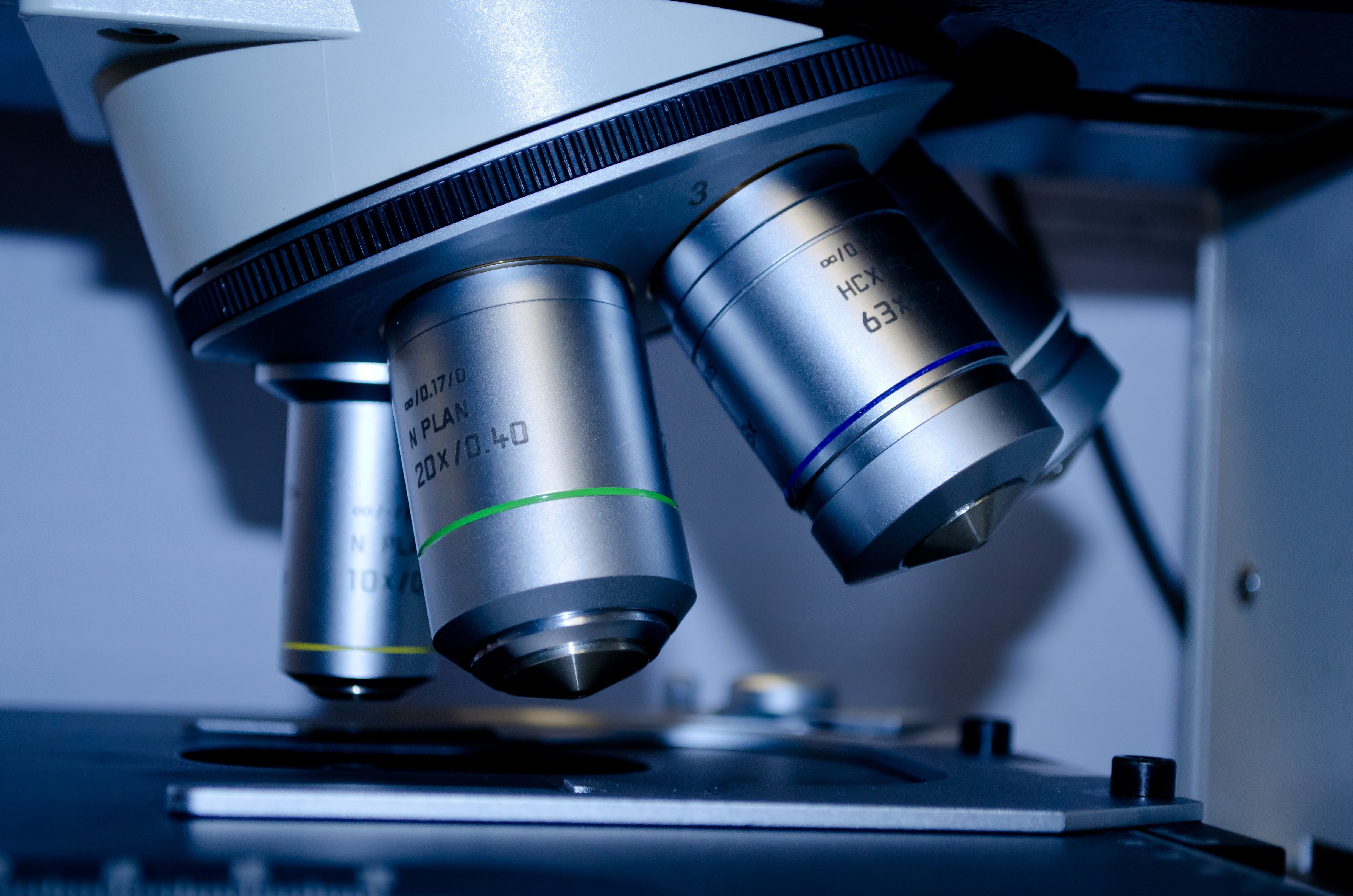 Over the past six years, researchers from the
Over the past six years, researchers from the 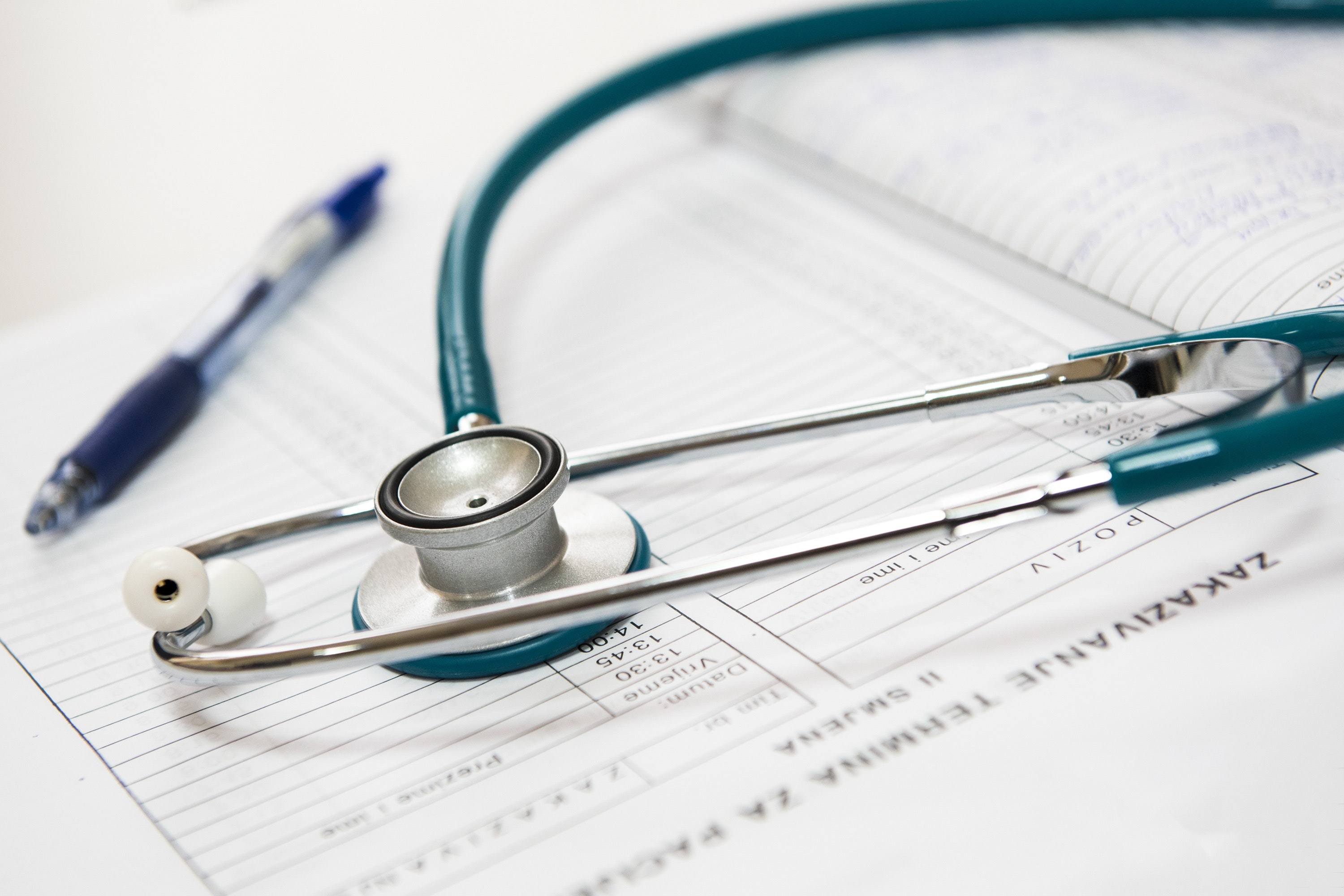 The
The 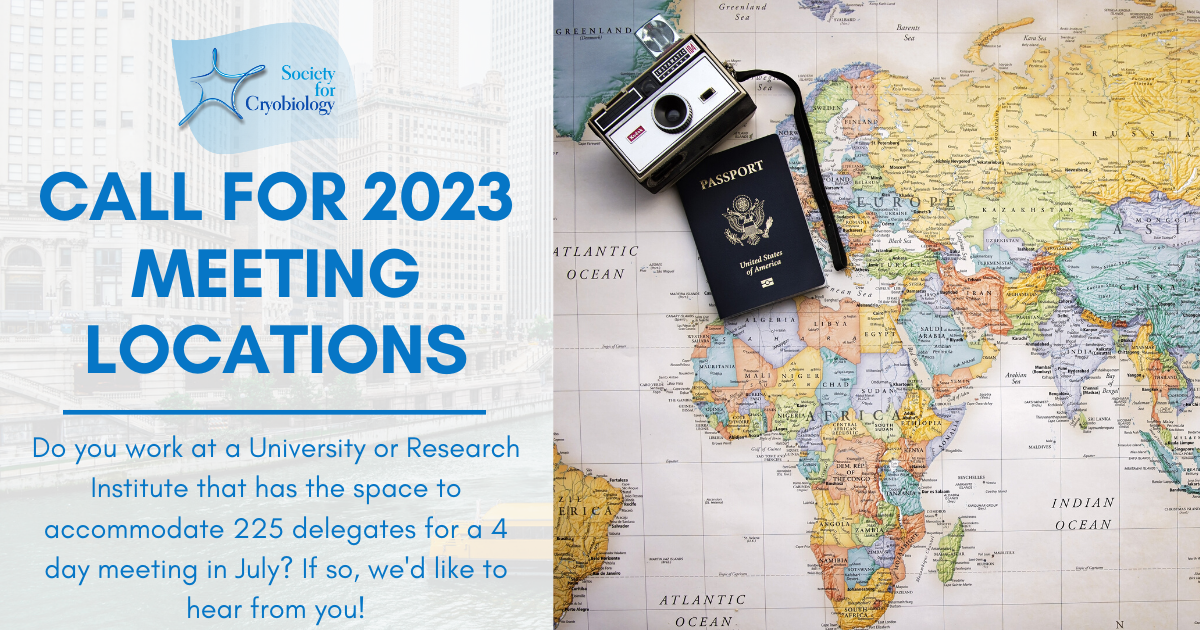
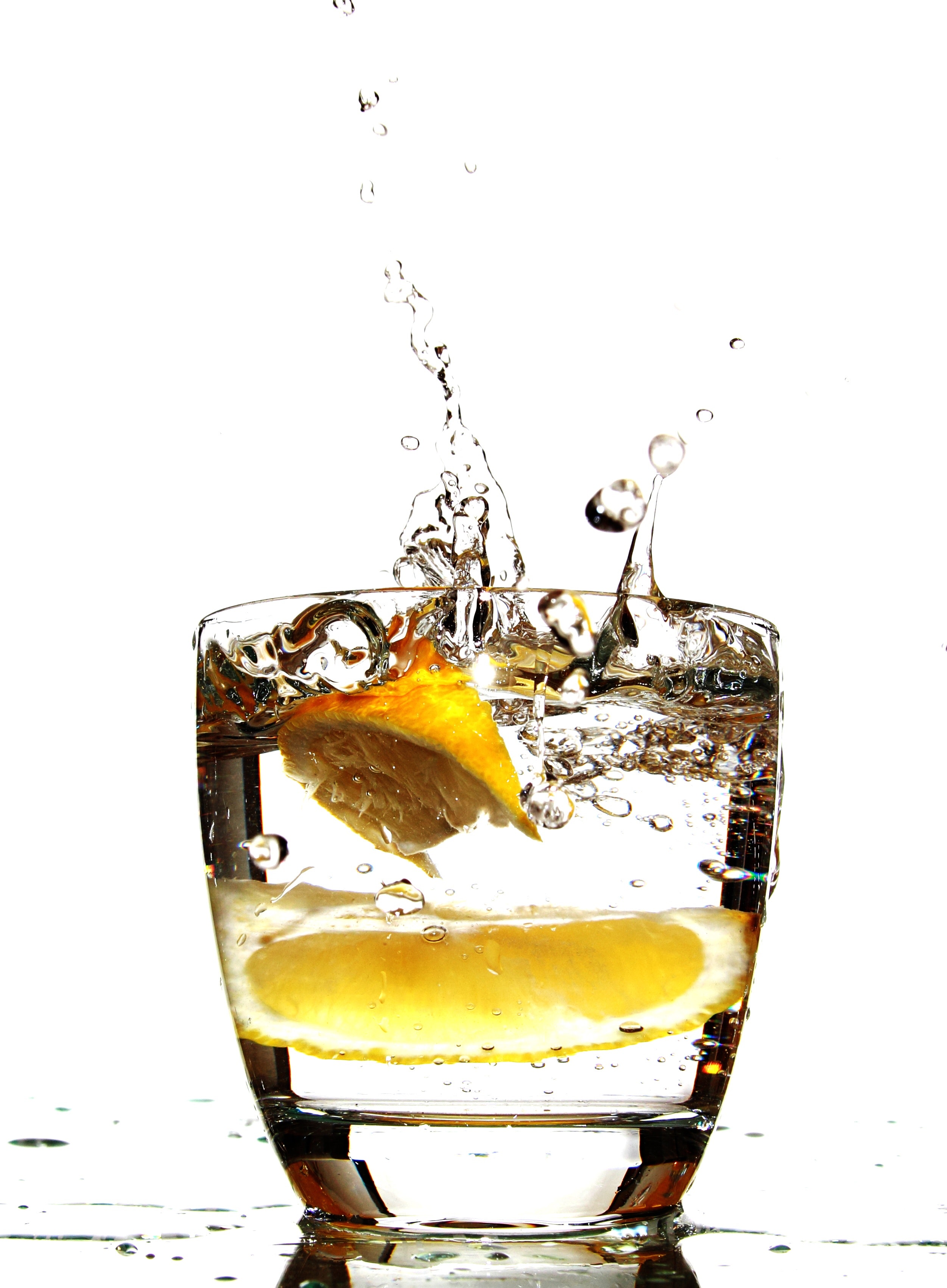
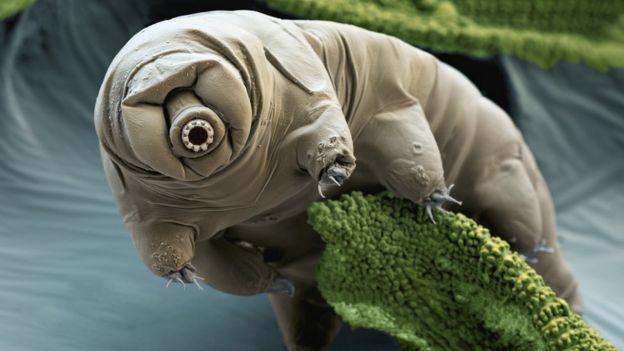 You shouldn't expect any Lunar base construction yet; the first know lunar "colonists" are
You shouldn't expect any Lunar base construction yet; the first know lunar "colonists" are 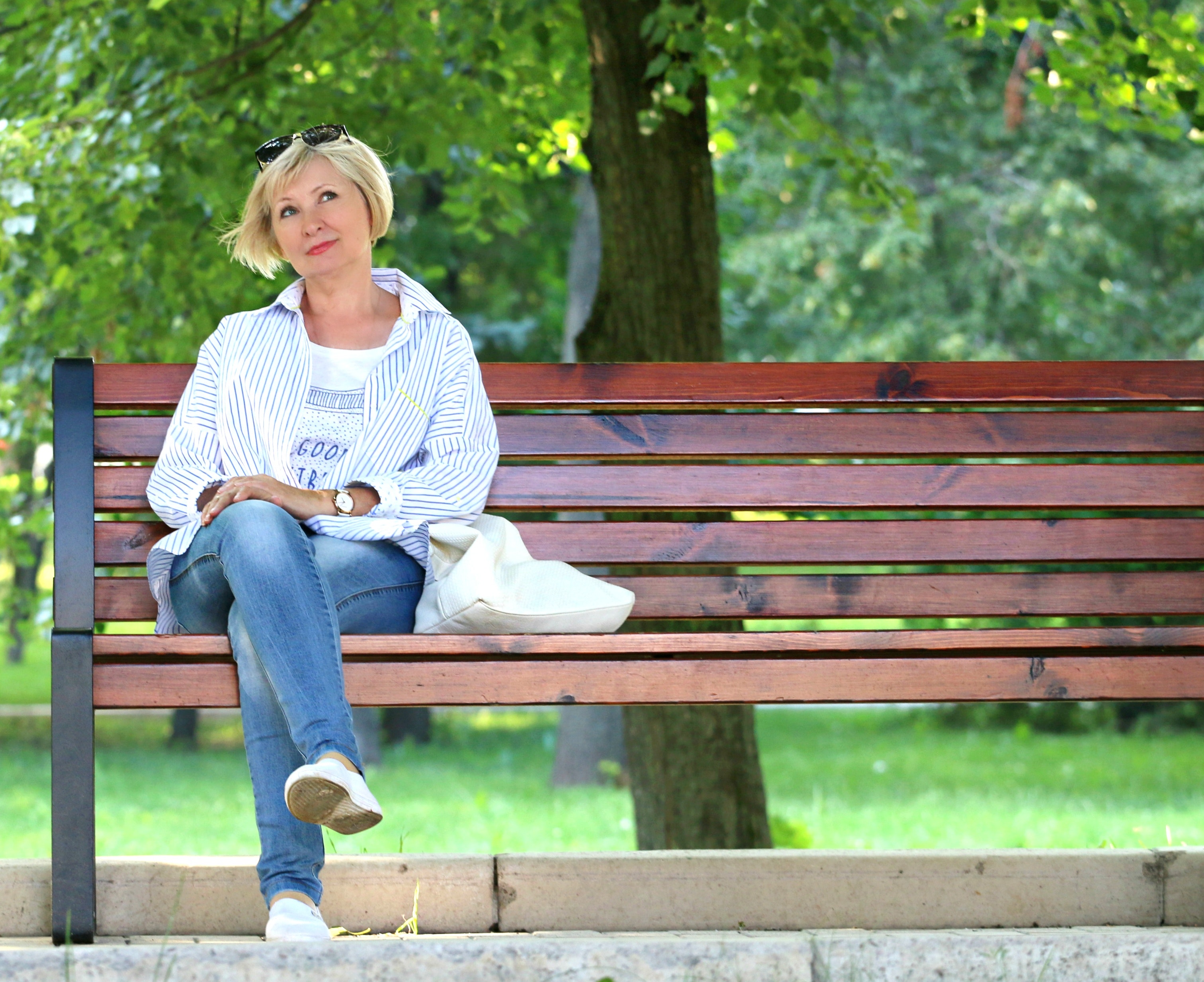 Springboarding off the research done to preserve female's fertility before cancer treatments, researchers are now applying the same techniques to women in an attempt to postpone menopause. Researchers remove an ovarian tissue sample, use cryopreservation to preserve the pre-menopausal tissue, and then, even decades later, thaw and graft the tissue back onto the body. This tissue can then restore the reduced hormones and delay menopause. Tissue samples from nine women are being preserved, ready to be used just as the women begin to enter menopause.
Springboarding off the research done to preserve female's fertility before cancer treatments, researchers are now applying the same techniques to women in an attempt to postpone menopause. Researchers remove an ovarian tissue sample, use cryopreservation to preserve the pre-menopausal tissue, and then, even decades later, thaw and graft the tissue back onto the body. This tissue can then restore the reduced hormones and delay menopause. Tissue samples from nine women are being preserved, ready to be used just as the women begin to enter menopause.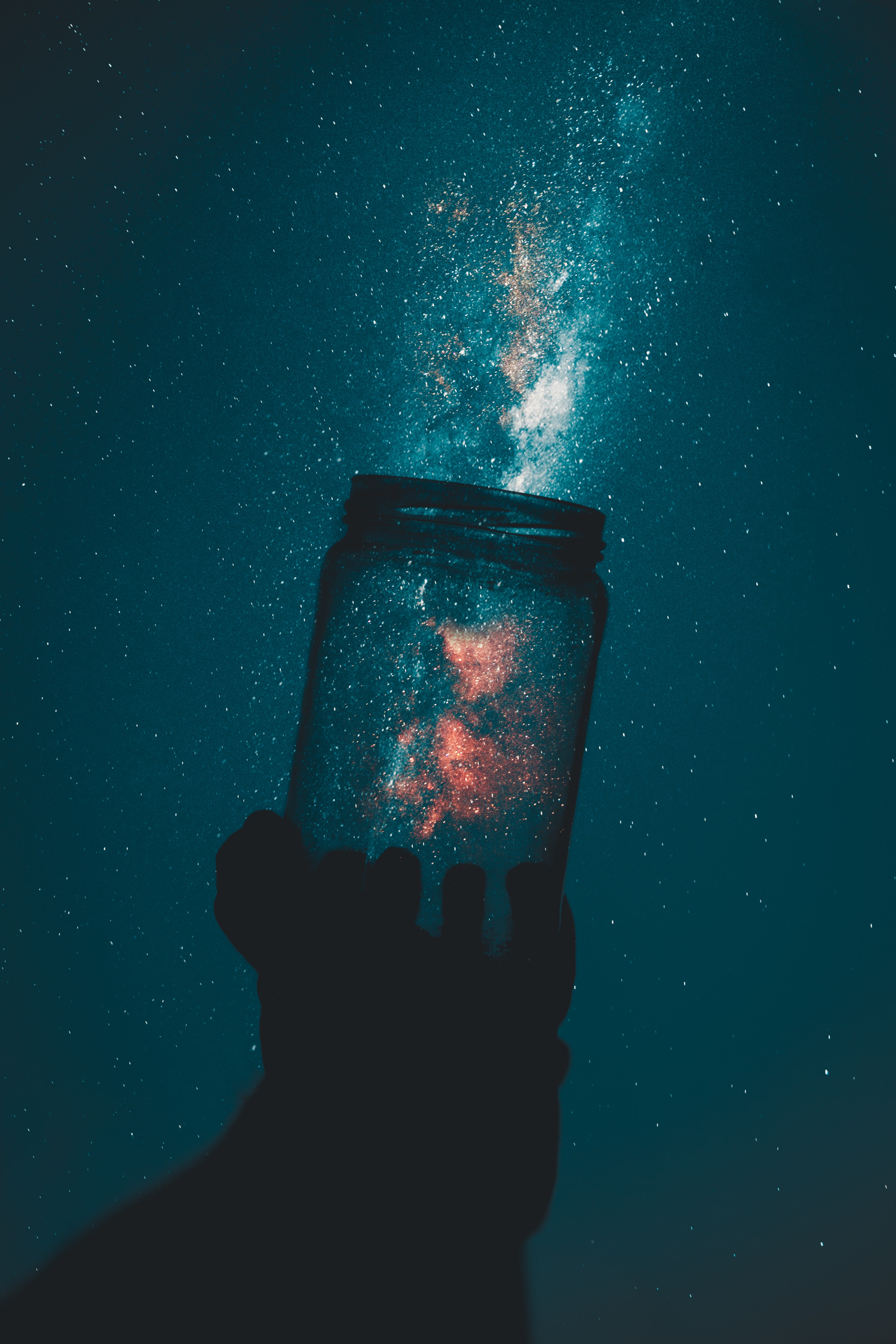 We don't have to worry about our planetary passports quite yet. As a species, we're still "light years" away from space babies, but the
We don't have to worry about our planetary passports quite yet. As a species, we're still "light years" away from space babies, but the 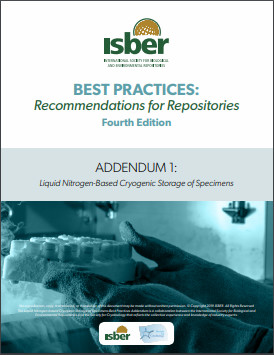 The Society for Cryobiology, in partnership with the ISBER, is pleased to announce the launch of the Liquid Nitrogen-Based Cryogenic Storage of Specimens Best Practices Addendum to the ISBER Best Practices 4th Edition. "The new Liquid Nitrogen Best Practices Addendum will be a go-to resource for the growing number of repositories being asked to store cellular products being used in adoptive therapy research and manufacturing. We are grateful to the team of contributors who are world leaders, who have shared their expertise in building and managing facilities to support collections requiring sub-Tg (glass transition, -135°C) storage,” said David Lewandowski, President of ISBER.
The Society for Cryobiology, in partnership with the ISBER, is pleased to announce the launch of the Liquid Nitrogen-Based Cryogenic Storage of Specimens Best Practices Addendum to the ISBER Best Practices 4th Edition. "The new Liquid Nitrogen Best Practices Addendum will be a go-to resource for the growing number of repositories being asked to store cellular products being used in adoptive therapy research and manufacturing. We are grateful to the team of contributors who are world leaders, who have shared their expertise in building and managing facilities to support collections requiring sub-Tg (glass transition, -135°C) storage,” said David Lewandowski, President of ISBER.